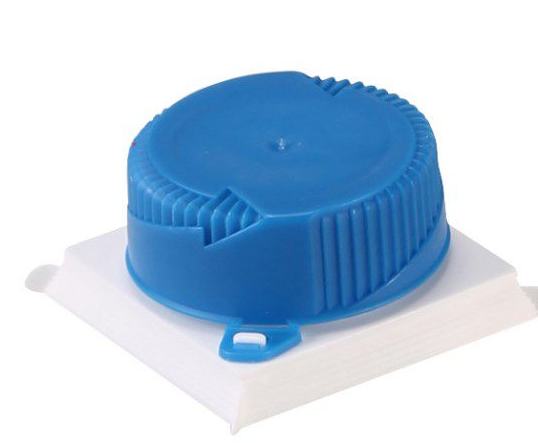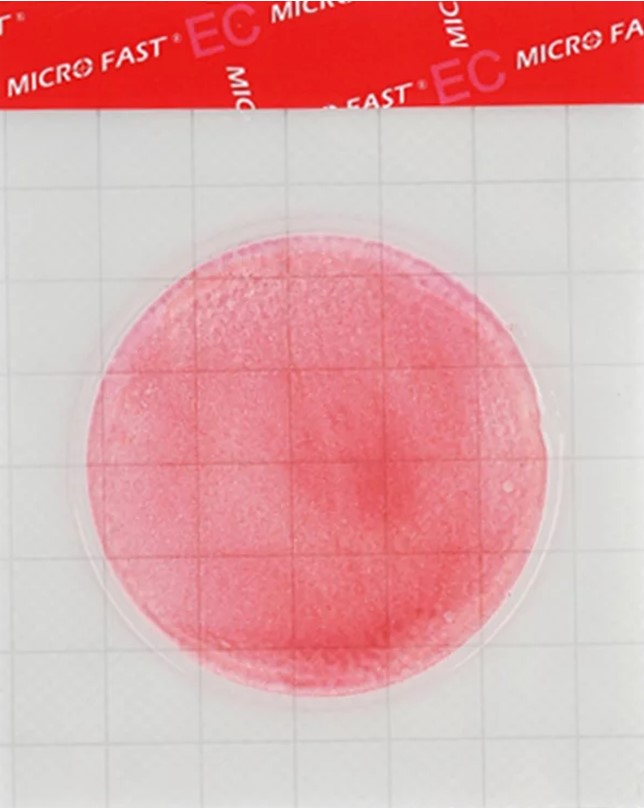A revision of beef import rates will help its producers in Russia, but much more measures are needed to support the industry
In his opinion, comprehensive support is now extremely important , which includes short-term and investment preferential loans, subsidies for achieving optimal weight standards for livestock, and stimulation of exports - otherwise RUSSIA , having already achieved noticeable success in the EXPORT of pork and poultry MEAT, risks not exploit its potential in the global beef market and once again increase dependence on imported cattle meat .
According to the decision of the Council of the Eurasian Economic Commission, Russia in 2024 can import up to 100 thousand tons of beef with a zero customs duty rate. In addition, an annual quota is established for the import of 570 thousand tons of fresh, chilled and frozen beef, subject to a duty rate of 15%; additional volume can also be imported, but the rate will be 50%.
On Friday it became known that the Ministry of Agriculture proposes to abolish tariff quotas on the import of cattle meat from 2025 with a transition to supplies subject to an import duty of 27.5%: approval of this measure has already been received by the subcommittee on customs and tariff regulation, in the future the issue is expected to be considered at EEC site.
“The condition under which, in the event of the abolition of tariff quotas, any volume of beef from non-CIS countries can be imported into Russia, subject to payment of a customs duty of 27.5%, was agreed upon when our country joined the WTO - in order to, if necessary, increase the level tariff protection of the country's market and attract new investors to cattle production. Over the past few years, our association has proposed to regulators - the Ministry of Economic Development, the Ministry of Agriculture - to exercise this right and abandon the obligations of beef quotas, since the quota itself has been excessive for several years, and the customs tariff rate compared to other countries protecting their beef market is very low,” said Sergei Yushin.
He calls the transition to a flat duty a step in the right direction, stipulating that the expected effect at the first stage will be lower, since at the same time a fairly significant volume of imports of frozen beef is offered at a zero customs tariff rate. And a gradual reduction, and even the abolition of such preferential imports, is not the only thing that needs to be done for Russian beef cattle breeding, which, after 10 years of rapid growth, when the share of beef and crossbred cattle increased from 2 to more than 20%, is entering a “plateau” stage from - due to the absence of any significant new projects.
“The cattle population continues to decline, and we do not note any serious investor interest in this industry, especially against the backdrop of high loan rates and very low government support,” says the HEAD of the industry association. According to Rosstat, the number of cattle at the end of the first half of the year decreased by 3.1%, to 17.7 million heads, including in agricultural organizations by 3.4% to 7.7 million heads. At the same time, the number of pigs in agricultural organizations by the end of June increased by 4.1%, to 27.67 million heads, poultry - by 3.7%, to 477.3 million tons.
“We do not exclude that beef may become the type of meat where at some point we will begin to return to increasing its supplies from abroad to the detriment of the development of our own beef cattle breeding. In my opinion, this would be a big mistake, given the potential of Russia and the steps already taken to create a modern beef cattle industry,” said Sergei Yushin.
Now the import of beef into the Russian Federation is gradually decreasing: in 2023, 271 thousand tons were imported (according to NMA, more than 100 thousand tons came from Belarus, 150-170 thousand tons from foreign countries), in 2022 - 290 thousand. tons The volume of own production is about 1.65 million tons of beef annually; Moreover, since 2015, its production in Russia has increased by 7%, in contrast to most other countries - major participants in this market.
“Russians are consuming more and more meat. Although both the share in the meat basket and the consumption of beef have decreased, we still eat quite a lot of it. If we compare with the world average, our beef consumption is almost 14 kg per person per year, while the world average is about 8.7 kg, in CHINA - about 7 kg, in some countries of Eastern Europe - about 10, because it expensive meat,” states the head of the industry association.
The price of beef cannot be low : the cost of beef production is a priori quite high due to the long cycle of raising livestock, due to the peculiarities of housing, fattening, and so on. And beef is inferior in terms of availability to poultry and pork both in the world and in Russia.
“Rosstat shows a gradual increase in beef prices in our country. But you should keep in mind that the beef that was on the shelves 10 years ago and now are two very different things. In addition to the fact that more than 20% of our beef comes from high-quality cattle, and not from old cows with meat soles, products with high added value occupy an increasing share of the market. And these are not only premium pieces of marbled beef, but also cut standard semi-finished products in individual packaging.”
Moreover, buyers increasingly do not want to deal with cutting, trimming, cutting into steaks or pieces at home, and packaging , which costs money, allows the product to be stored longer and reduces losses. “It’s both aesthetically pleasing and convenient, and you have to pay for it as well as for the time saved when someone cut up the carcass for you. Beef in most countries of the world is a premium product, a dish for a holiday , and the idea that it should cost less than sausage or pork is wrong,” he noted.
“By administratively putting pressure on beef prices without taking into account the economic component and profitability of production, you can kill the potential for the revival of beef cattle breeding in our country. For several years now we have not seen new large-scale projects,” says Sergei Yushin.
For example, now official figures from the Ministry of Agriculture show the unprofitability of fattening livestock, but at the same time, agricultural land unclaimed for crop production in non-black earth areas could well be used for beef cattle breeding. “There must be financial incentives, but support for the industry is currently insufficient. But if in 20–30 years there is a critical shortage of beef in the world, and there is such a possibility, Russia, developing beef production today, could in 15–20 years take the place of a prominent supplier, as has already happened with poultry and pork,” - says the publication’s interlocutor. And although the Russian Federation already exports beef to dozens of countries, supply volumes remain modest for such a vast territory.
This goal cannot be achieved without significant government support for the industry at its formation stage, Sergei Yushin is sure. Among these incentives are the ability to attract preferential loans at a rate of no more than 5% for periods of up to 15 years, the provision of additional subsidies for livestock achieving optimal slaughter conditions (from 500 to 650 kg for different breeds) and extremely accurate and verified price regulation.
“Beef needs to be priced at a price that makes it sustainable to produce long-term from farm to pasture to finishing. This is the main condition for the stable operation of the industry. If you put pressure on prices without taking into account the economics of production, you will not be able to convince investors to enter such an industry. It is much more effective and fair to continue to modernize targeted support for the least protected segments of the population, which has already shown good results, rather than maintaining a high level of consumption among wealthier citizens, increasing the risks of degradation of the industry,” emphasized Sergei Yushin.
Read together with it:
- Belstat reported how much grain, milk, meat, and vegetables are produced in Belarus per capita.November 14, MINSK . Belarus produces 913 kg of grain, 958 kg of MILK, 341 kg of potatoes, and 304 kg of vegetables per capita, according to a review by the National Statistical Committee for the Day of Agricultural and Processing Industry Workers, BELTA reports. The country also produces 78 kg of fruits and berries, 147 kg of livestock and poultry (slaughter weight), and 4......
- The IEA sees a risk of a decline in oil production in Russia due to sanctions.The IEA sees a risk of reduced oil production in RUSSIA due to US sanctions , but maintains its production forecast. According to the IEA, Russian oil exports will remain unchanged.There is a "significant downside risk" to Russia's oil production forecast due to US sanctions, the International Energy Agency (IEA) said in a report.BLOOMBERG . The agency's experts believe that the latest US sanction...
- UniCredit заявил о галактических усилиях из-за санкций против РоссииUniCredit старается не нарушить «более 15 тыс. санкций», а также не «совершать ошибки», которые позволят изъять его активы в России, заявил гендиректор. После начала военной операции банк начал рассматривать возможность ухода Итальянский банк UniCredit прилагает «галактические усилия», пытаясь соблюсти международные санкции в отношении своего российского подразделения. Об этом заявил генеральный д...
- "Белорусские продукты - страновой бренд". В Гродно поздравили работников сельского хозяйства областиФото 13 ноября, Гродно. В Гродно торжественно поздравили с профессиональным праздником работников сельского хозяйства, передает корреспондент БЕЛТА.Этот праздник в нынешнем году для аграрной отрасли региона особенный - впервые в истории в области собрали более 2 млн т зерна с учетом кукурузы. Как отметил в беседе с журналистами председатель комитета по сельскому хозяйству и продовольствию облиспол...
- He crawled to the icon with prayer. The true story of a man who overcame drug addiction.Alexander Ovchinnikov. Topic News. Our project's hero was a drug addict for many years. The thought that this was a dead end never left him, but his addiction proved stronger. One day, when he could no longer walk, he crawled to an icon in prayer. This became his first step toward a new life. Today, he heads a charity center that helps those who have given up hope and are unable to quit ALCOHOL an...
- Russian agriculture: self-sufficiency continues to growThe industry has a track record of implementing new technologies and increasing productivity. RUSSIA is already confidently self-sufficient in grain, MEAT, fish, vegetable oil, and SUGAR. Grain and vegetable production is also forecast to be higher this year, despite unfavorable weather conditions in some regions. The Ministry expects historic highs for some crops and continues to support agricult...
- Низкое предложение и устойчивый спрос: в Аргентине растут цены на мясоЦены на говядину снова выросли, что отразилось на полках супермаркетов и в мясных магазинах. За последние две недели розничные цены выросли на 8–12%, а на некоторые популярные отрубы рост превысил 15% по сравнению с октябрем. Тем не менее, продажи остаются высокими: потребители продолжают покупать, принимая новые цены и закрепляя тенденцию, которая повторяется каждый год в конце года, когда спрос ...




























































